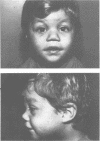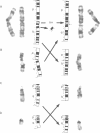Abstract
A Caucasian boy with a de novo complex chromosome rearrangement owing to six chromosome breaks was small for gestation with microcephaly, complex heart defect, hypotonia, left auricular pit, simian creases, and ankyloblepharon filiforme adnatum. The rearrangement included two translocation, t(15;21) (q22;q22) and t(3;11)(q21;q11), with the derivative 3 showing in addition pericentric inversion (p11q11) and interstitial deletion (q11q21). Based on parental satellite polymorphisms of chromosomes 15 and 21, the paternal gamete appeared to be the source of the chromosome rearrangement. There was no evidence of mitotic chromosome instability. A review of 36 reported patients with complex chromosome rearrangements secondary to more than four breaks indicates that complex chromosome rearrangements are compatible with gamete survival, zygote formation, and postnatal life. The latter is usually compromised by structural defects, growth retardation, and often mental retardation.
Full text
PDF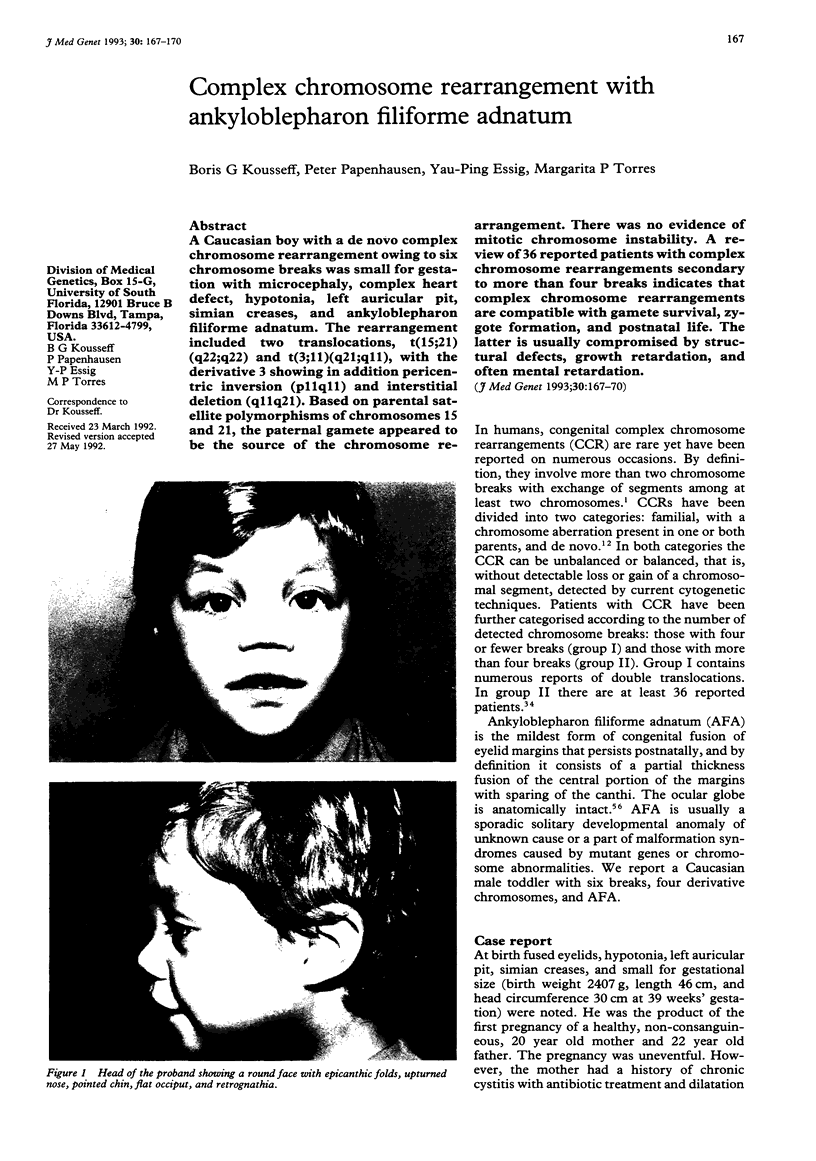
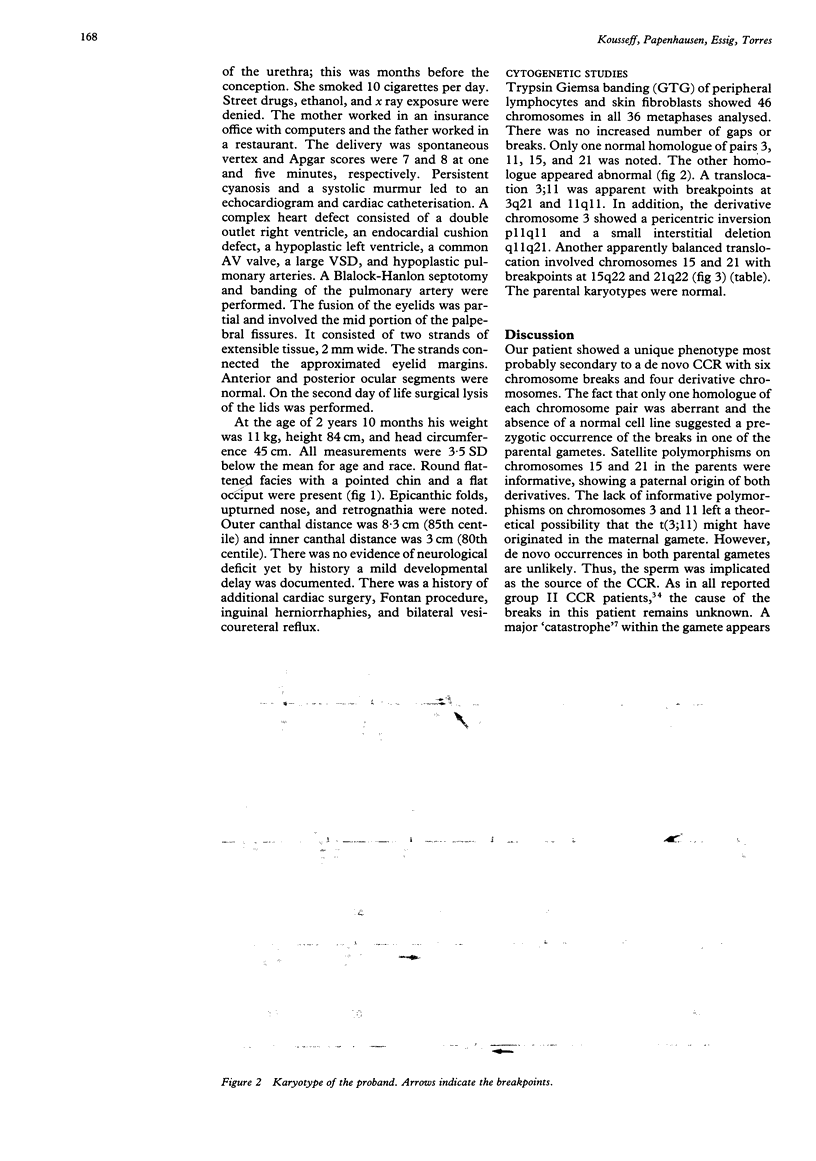
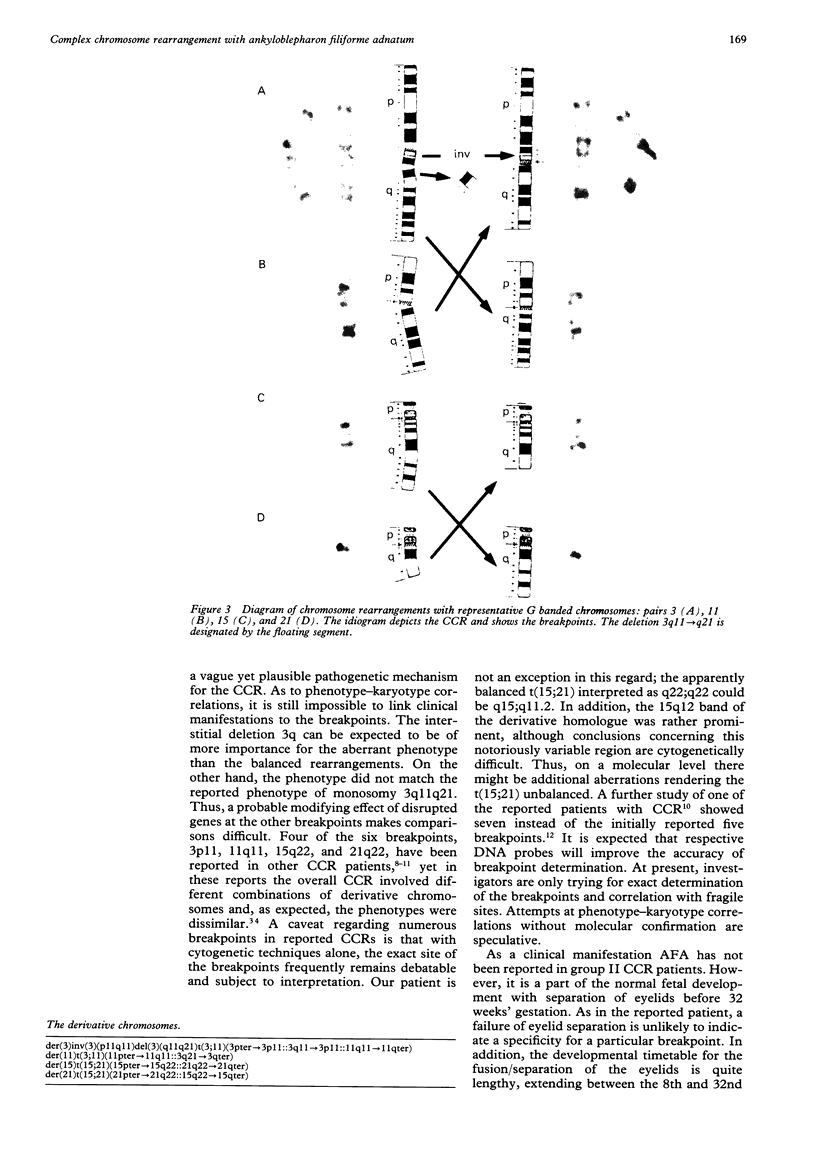
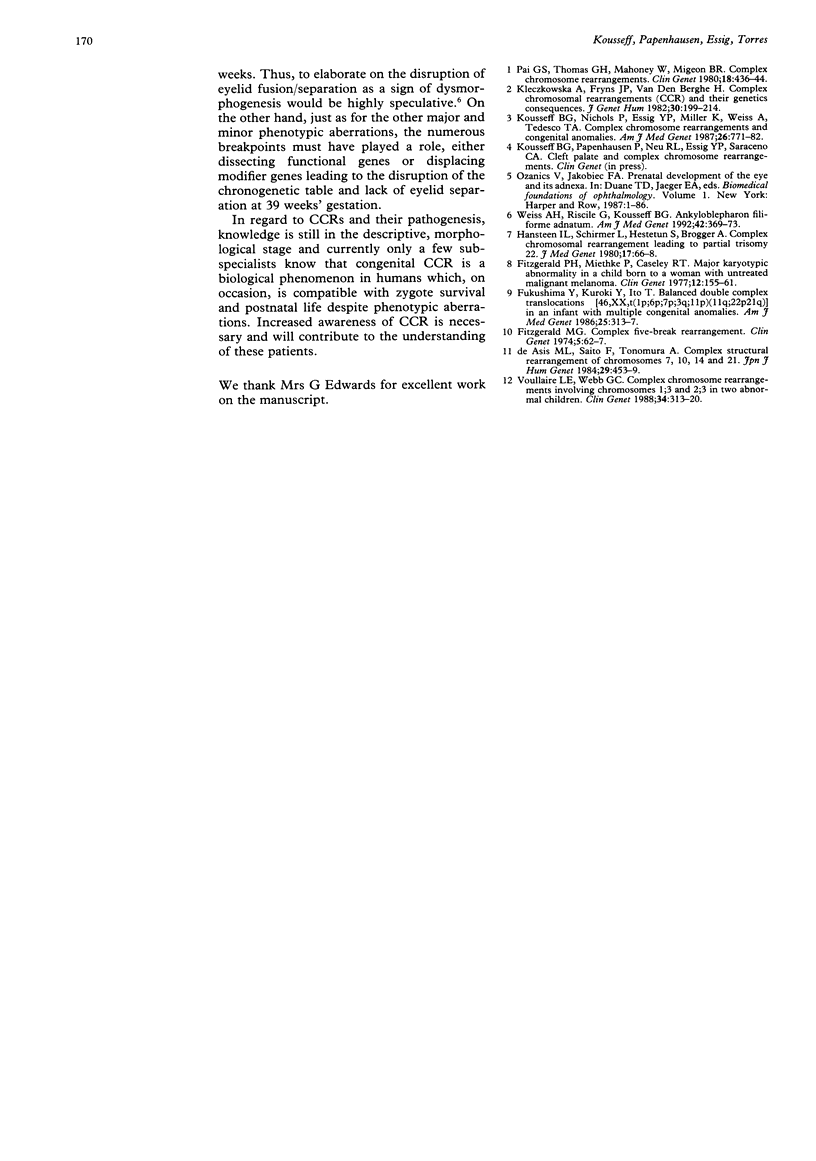
Images in this article
Selected References
These references are in PubMed. This may not be the complete list of references from this article.
- Fitzgerald M. G. Complex five-break rearrangement. Clin Genet. 1974 Jan;5(1):62–67. doi: 10.1111/j.1399-0004.1974.tb01661.x. [DOI] [PubMed] [Google Scholar]
- Fitzgerald P. H., Miethke P., Caseley R. T. Major karyotypic abnormality in a child born to a woman with untreated malignant melanoma. Clin Genet. 1977 Sep;12(3):155–161. doi: 10.1111/j.1399-0004.1977.tb00918.x. [DOI] [PubMed] [Google Scholar]
- Fukushima Y., Kuroki Y., Ito T. Balanced double complex translocations [46,XX,t(1p;6p;7p;3q;11p)(11q;22p;21q)] in an infant with multiple congenital anomalies. Am J Med Genet. 1986 Oct;25(2):313–317. doi: 10.1002/ajmg.1320250217. [DOI] [PubMed] [Google Scholar]
- Hansteen I. L., Schirmer L., Hestetun S., Brøgger A. Complex chromosomal rearrangement leading to partial trisomy 22. J Med Genet. 1980 Feb;17(1):66–68. doi: 10.1136/jmg.17.1.66. [DOI] [PMC free article] [PubMed] [Google Scholar]
- Kleczkowska A., Fryns J. P., Van den Berghe H. Complex chromosomal rearrangements (CCR) and their genetic consequences. J Genet Hum. 1982 Oct;30(3):199–214. [PubMed] [Google Scholar]
- Kousseff B. G., Nichols P., Essig Y. P., Miller K., Weiss A., Tedesco T. A. Complex chromosome rearrangements and congenital anomalies. Am J Med Genet. 1987 Apr;26(4):771–782. doi: 10.1002/ajmg.1320260403. [DOI] [PubMed] [Google Scholar]
- Pai G. S., Thomas G. H., Mahoney W., Migeon B. R. Complex chromosome rearrangements. Report of a new case and literature review. Clin Genet. 1980 Dec;18(6):436–444. doi: 10.1111/j.1399-0004.1980.tb01790.x. [DOI] [PubMed] [Google Scholar]
- Voullaire L. E., Webb G. C. Complex chromosome rearrangements involving chromosomes 1;3 and 2;3 in two abnormal children. Clin Genet. 1988 Nov;34(5):313–320. doi: 10.1111/j.1399-0004.1988.tb02884.x. [DOI] [PubMed] [Google Scholar]
- Weiss A. H., Riscile G., Kousseff B. G. Ankyloblepharon filiforme adnatum. Am J Med Genet. 1992 Feb 1;42(3):369–373. doi: 10.1002/ajmg.1320420324. [DOI] [PubMed] [Google Scholar]
- de Asis M. L., Saito F., Tonomura A. Complex structural rearrangement of chromosomes 7, 10, 14 and 21. Jinrui Idengaku Zasshi. 1984 Dec;29(4):453–459. doi: 10.1007/BF01876503. [DOI] [PubMed] [Google Scholar]



